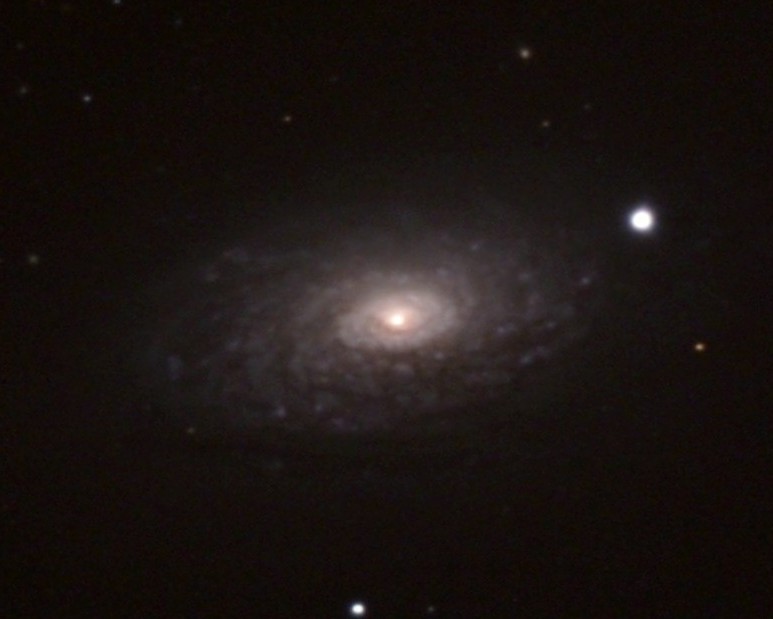
|
|
| M63, The Sunflower Galaxy, (NGC 5055) a spiral galaxy. Image above has been cropped and downsized for display. Click on image for full frame full resolution picture. |
|
The Sunflower galaxy M63 is one of the bright northern
galaxies, early recognized as a spiral type galaxy. It has a unique patchy
spiral pattern from which it gets its name, which can be traced well into
the periphery of its 6 arc seconds small smooth-textured central region. The
patches are starry regions, and the dark areas are dust patches and clouds.
This is one of the first galaxies where it was noticed that the starry
patches, especially is the outer regions, were rotating around the center
eight to ten times faster than it should have been possible. It turns out
that nearly all galaxies where rotational speed can be gauged, and mass due
to visible material can be estimated, have 8-10 times more mass than we can
see. This mysterious stuff has been dubbed dark matter, but even that is a
bit of a misnomer, because it isn't even dark, like the dark dust lanes that
can be seen here. It's gravitational influence and its surprising amount of
mass is about all we know about it so far. Although as we look up in the sky M63 appears a good 6 degrees away in the sky, it in fact forms a gravitationally linked group with M51, the Whirlpool Galaxy, and several smaller galaxies. Interestingly, M51 was the first galaxy who's spiral nature was recognized. The group is about 37 million light years distant. It can be found high in the northern midnight sky in mid May, about 42 degrees above the galactic equator, |
|
10"
F6.3 Schmidt Cassegrain Telescope, (1600mm F.L.) Modified Canon
300D camera with IR-UV filter, placed at the scopes prime focus |